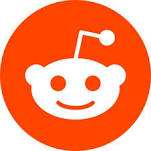On Launching A Crowdfunding Campaign For Wood-Carved Globes
Hi, I’m Mark Jeffery, and I’m the founder of goodwoodglobes, making beautiful, tactile, wood-carved maps and globes.
Despite my background as a software developer, I’m doing everything we’re told not to do as founders: mine is a non-software, non-service, non-subscription product; it’s hard to validate, hard to scale, hard to grow; and it’s slow.
Nothing like a challenge!
I launched goodwoodglobes with a crowdfunding campaign in February 2019, raising $5,000 Canadian towards the wood-carving machine I needed. I’m still proud of the video I made for the campaign, which more than one person has told me brought them close to tears!
I’ve now delivered all the custom mountain maps I promised to cartographers, mountaineers and dendrophiles around the world, and I’m working towards fully three-dimensional wood-carved relief globes.
My revenue this year is $8,000 Canadian, which I hope to increase next year, once I’ve finished development and can focus on sales, marketing and distribution.

What's your backstory and how did you get into entrepreneurship?
I’ve always wanted to be an entrepreneur, yet I spent the first few decades of my career doing everything but be an entrepreneur.
I’ve worked as a coder, a product engineer, a manager, a meteorologist, a first aid instructor, a tutor, a writer, and a paramedic. I’ve worked out of Twin Otter aircraft in Antarctica, Georgian offices in the West End of London, an ashram on the Bay of Bengal, and series of shacks in northern British Columbia.
As I approached my 50th year on this planet, working long hours in my day job for a software startup and my day and night job in the ambulance service, I still couldn’t shake my ambition to strike out on my own.
In the popular imagination, the founders of the highest-growth startups are always in their twenties: you can forget about Y Combinator if you’re too far into your thirties. In reality, however, the average age of a successful startup founder is 45. Maybe it wasn’t too late for me after all!
With my experience as a software developer, my obvious path was to create a software-as-a-service product, sell subscriptions to businesses at $79/month, sit back and watch the money roll in. Instead, I chose to create a real product.
When you look at what the most successful people do with their lives, it often seems as if they did the one thing that no one else in the world could have done.
For myself, I’ve always been fascinated with the idea of mapping this planet; I love mountains, deserts, glaciers, and oceans; I’ve long appreciated the beauty of wood; and I know how to write software to create three-dimensional models. Put these together, and it seems inevitable that I’d make wood-carved maps and globes.

Take us through your entrepreneurial journey. How did you go from day 1 to today?
I started prototyping wood-carved globes at a makers’ workshop, a few thousand feet down the valley from the Canadian mountain town where I live. Having access to an expensive wood-carving machine really helped me get my start!
Progress was frustratingly slow. Getting the three-dimensional models right was not easy, and it involved a lot of trial and error. Using the machine at the makers’ workshop, I could work at a rate of one trial and one error per week. I knew that to make any real progress, I’d need a wood-carving machine of my own.
One winter’s day when the snow was deep on the ground, I decided to launch a crowdfunding campaign. Not only would it raise money towards the $15,000 cost of the machine, but it would help validate my idea: were there people in the world who’d be willing to part with money for a wood-carved globe?
I gave myself two months to prepare. Here’s how I launched my crowdfunding campaign:
1. Choose between Kickstarter and Indiegogo
Kickstarter’s heart and soul is in artistic projects, while Indiegogo seems unashamedly focused on technology. My wood-carved globes fall somewhere between the two. Kickstarter’s prejudice against physical products left me uncertain whether they would permit me to launch a campaign without a finished prototype. When I asked them, they answered breezily: maybe! maybe not! who knows? but no problem! go ahead! launch! we’ll just take you down mid-campaign if the whim takes us! Er… I don’t think so. Indiegogo it was.
2. Script, shoot and edit a campaign video
The video is crucial to the success of a crowdfunding campaign. It doesn’t need to be highly polished – mine was made on a budget of $100, which paid for music from Pond5 and a few seconds of footage from Storyblocks – but it does need to be inspiring. That’s worth repeating: it needs to be inspiring. (Or funny, but I’m not sure I could pull off funny.) I spent an extraordinary number of hours of my life on my video, and it was worth every second of that effort.
3. Decide on your rewards
In return for contributions to my campaign, I offered wood-carved globes, of course, but I also needed some lower-priced items. A successful crowdfunding campaign needs to attract support from the risk-averse as well as the risk-takers, people with less money to spend as well as those with more. So as well as the globes, I offered three-dimensional mountain maps, continent maps, and world maps, and even, for just $10, a wood-carved thank you note.
4. Set your prices
It’s hard to put a price on a product that doesn’t exist yet. I did a huge amount of research into how much it might cost to make my wood-carved maps and globes, pricing in the machine, the tooling, the materials, the packaging, the postage and my time (not my time in development, just my time in manufacturing, at minimum wage). I then discounted my prices heavily to reward my early supporters for taking a risk on me. My lowest-priced world map, discounted to $30, sold at a significant loss, but it was worth it for the support brought by the backers who bought it.
5. Create a crowdfunding campaign page
While the video and the rewards are the most important elements on any crowdfunding campaign page, a compelling story and striking images are essential to inspire confidence. Remember, you’re trying to sell a product that doesn’t exist yet to people who’ve never met you, so you need to convince them that you can and will deliver. I made sure my Indiegogo page provided plenty of information, keeping the tone conversational, so that people would feel like they know me and can trust me.
6. Line up publicity for launch day
I set myself the goal of reaching out to 300 individuals and organizations well in advance of launch day: bloggers, podcasters, YouTubers, magazines, woodcarving clubs, cartography societies, small business organizations, crowdfunding forums, home decor websites, product curators, local contacts, family, friends. In every case, I wrote a personal message, which yielded an 18% response rate. What seemed my biggest success – an interview with Canadian Geographic – yielded no more than a handful of click-throughs to my crowdfunding campaign, but every little helped.
7. Be active on social media
I’d like to say that I’d been building an audience on social media for years, but in fact, I had to build one from scratch in just two months. Instagram is pretty, but I suspect it yielded no traffic; Reddit is lively, but most subreddits take you down if you so much as mention your product; Twitter, on the other hand, was crucial to the success of my campaign, since a few cartography enthusiasts with significant followings were vocal in their support.
I worked on publicity in every spare moment for the 30 days of my crowdfunding campaign, reaching my $5,000 Canadian goal with 10 days to go. Not only could I go ahead and buy a wood-carving machine, but I’d proved that there were at least 25 people in the world who would pay money for a wood-carved map or globe. (OK, I admit, one of them was my mum, and others were lifelong friends, but there were strangers too!)

How are you doing today and what does the future look like?
I’ve heard other crowdfunders say that the year following their crowdfunding campaigns, when they had to deliver on their promises, was the worst year of their lives.
There has been barely a moment, outside of my day job and my other day and night job, that I haven’t dedicated to developing, carving, packaging and delivering maps and globes.
Time after time, as I’ve run into problem after problem, I’ve had to remind myself: these are the glory days of my globe making!
I’ve succeeded in shipping all the maps I’d promised, and I’m making good progress on the globes. I’m looking forward to shipping all the globes, meeting the last of my crowdfunding commitments, in January 2020, a full year after launching my campaign.
Then I’ll be free to expand from my niche customer base of cartography enthusiasts into three potential markets:
- personal gifts – a custom, wood-carved globe would make an extraordinary gift for any birthday, holiday or anniversary;
- corporate gifts – maps and globes are traditionally adorned with cartouches in emptier areas such as the Pacific Ocean; my wooden globes could be similarly carved with corporate logos;
- weddings – a wood-carved globe engraved with the couple’s names and wedding date, marked with the places in the world's most important to them both, would make the dream centerpiece for a wedding.
It’s difficult to know which of these opportunities might prove the most fruitful, but I can’t wait to find out!

Through starting the business, have you learned anything particularly helpful or advantageous?
Stay focused – I offered a range of lower-priced wood-carved maps to open up my crowdfunding campaign to more modest contributions. Once I’d put in all the hard work to develop these products, I was reluctant to drop them, even after my crowdfunding campaign was complete. That was a mistake. Selling products for a loss is a good way to go out of business! The only way my venture can survive is if I focus on the higher-priced, higher-margin wood-carved globes.
Make it personal – Almost as an afterthought, I gave my customers the option of a custom inscription on the back of their wood-carved maps and the stands for their wood-carved globes. It’s significantly more work to do this, but people love it. I’ve also taken the time to customize each and every email I sent to my customers, which has allowed me to start real conversations with them and learn what inspires them.
Raise prices – I’ve heard this advice over and over: startup founders invariably charge too little. Yet raising prices is easy to say, difficult to do. I discounted prices for my earliest supporters, which I think was right, rewarding them for taking a chance on a product that didn’t yet exist. Once my wood-carved maps did exist, however, I didn’t remove those discounts. Again, that was a mistake. My prices need to reflect the quality of the materials and workmanship that go into my carvings and the value they deliver to my customers. When I did finally remove some of the discounts, I found new customers who didn’t flinch at the higher prices.

What platform/tools do you use for your business?
I have a tendency to want to do everything myself using the most basic tools:
- I created my own website (HTML, CSS, Javascript, jQuery, PHP, MySQL);
- I wrote my own software to generate three-dimensional models (Microsoft Visual C++, meshlabjs.net, VCarve Pro, ShopBot);
- I post to social media the old-fashioned way (Instagram, Twitter, reddit);
- I take my maps and globes to the post office for shipping (Canada Post).
Here are a few of the more powerful tools I use:
Crowdfunding – Indiegogo. If your campaign target is less than $20,000, don’t expect any help or traffic from Indiegogo: not a single dollar of the contributions I received came from Indiegogo’s audience.
Payments – Stripe. As soon as I wanted to start taking payments independently of Indiegogo, I integrated Stripe into my website. It just works.
Orders – Airtable. I’ve yet to take advantage of the full power of Airtable, but just for keeping track of orders, it’s a level above any spreadsheet or database.
Email – Mailgun. Simple, easily automatable email sending.
What have been the most influential books, podcasts, or other resources?
Indie Hackers podcast – Courtland Allen is a consummate interviewer. Inspiration and motivation for all startup founders.
Side Hustle School podcast – A 5-minute side-hustle story every day from Chris Guillebeau, with bad puns. So many ideas, there has to be one for you.
Everyone Hates Marketers podcast – No-nonsense from Louis Grenier. Some episodes more for marketing professionals but most are valuable learning for founders too.
Harry’s Marketing Examples – I’d recommend any founder to subscribe to Harry’s email list for well-written, real-world, practical marketing ideas.
Endurance: Shackleton's Incredible Voyage by Alfred Lansing – And you thought starting a business was hard! This book won’t help with your startup but might help with your perspective. Only $10 for the paperback, so go ahead and order it right now.

Advice for other entrepreneurs who want to get started or are just starting out?
Here’s the biggest thing for me.
I often looked at people who’d started a business, and thought that they must be somehow different from me.
They know more than me.
They have better ideas than me.
They’re more outgoing than me.
They’re less risk-averse than me.
They’re more determined than me.
And so on.
But the truth is, the only difference between those people and me was that they’d started a business, and I hadn’t.
I don’t quite know what the obstacle was that prevented me from getting started for so long, but I do know how to overcome that obstacle:
Just start.

Where can we go to learn more?
Check out my maps and globes at goodwoodglobes.
Order now for delivery in March 2020 on Indiegogo.
Follow on Twitter or Instagram.
Check out my visualizations at thingsmadethinkable.com.
Contact me – I’d love to chat!

Download the report and join our email newsletter packed with business ideas and money-making opportunities, backed by real-life case studies.

Download the report and join our email newsletter packed with business ideas and money-making opportunities, backed by real-life case studies.

Download the report and join our email newsletter packed with business ideas and money-making opportunities, backed by real-life case studies.

Download the report and join our email newsletter packed with business ideas and money-making opportunities, backed by real-life case studies.

Download the report and join our email newsletter packed with business ideas and money-making opportunities, backed by real-life case studies.

Download the report and join our email newsletter packed with business ideas and money-making opportunities, backed by real-life case studies.

Download the report and join our email newsletter packed with business ideas and money-making opportunities, backed by real-life case studies.

Download the report and join our email newsletter packed with business ideas and money-making opportunities, backed by real-life case studies.















